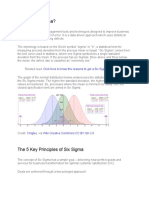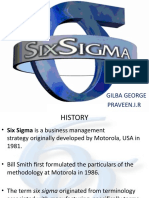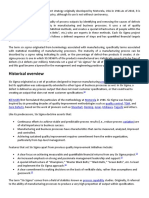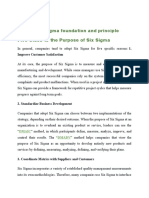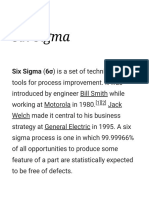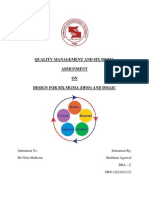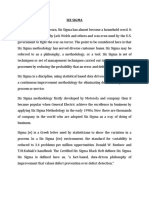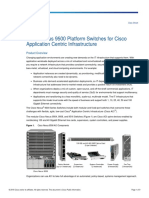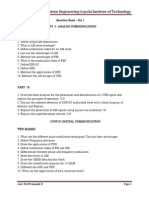0% found this document useful (0 votes)
7 views5 pagesGroup 10 EFSix Sigma Summary
Six Sigma is a data-driven methodology aimed at improving quality and reducing process variation to achieve near-perfect processes with only 3.4 defects per million opportunities. It utilizes a structured problem-solving framework called DMAIC for existing processes and DMADV for designing new processes, focusing on measurable results and customer satisfaction. Widely adopted across various industries, Six Sigma emphasizes customer satisfaction, data-driven decision-making, and continuous improvement.
Uploaded by
Nailah KurangkingCopyright
© © All Rights Reserved
We take content rights seriously. If you suspect this is your content, claim it here.
Available Formats
Download as DOCX, PDF, TXT or read online on Scribd
0% found this document useful (0 votes)
7 views5 pagesGroup 10 EFSix Sigma Summary
Six Sigma is a data-driven methodology aimed at improving quality and reducing process variation to achieve near-perfect processes with only 3.4 defects per million opportunities. It utilizes a structured problem-solving framework called DMAIC for existing processes and DMADV for designing new processes, focusing on measurable results and customer satisfaction. Widely adopted across various industries, Six Sigma emphasizes customer satisfaction, data-driven decision-making, and continuous improvement.
Uploaded by
Nailah KurangkingCopyright
© © All Rights Reserved
We take content rights seriously. If you suspect this is your content, claim it here.
Available Formats
Download as DOCX, PDF, TXT or read online on Scribd
/ 5











